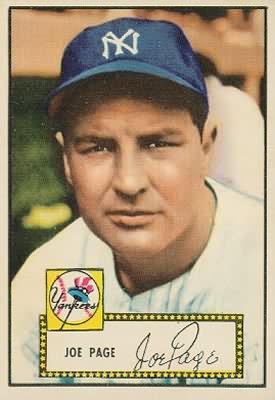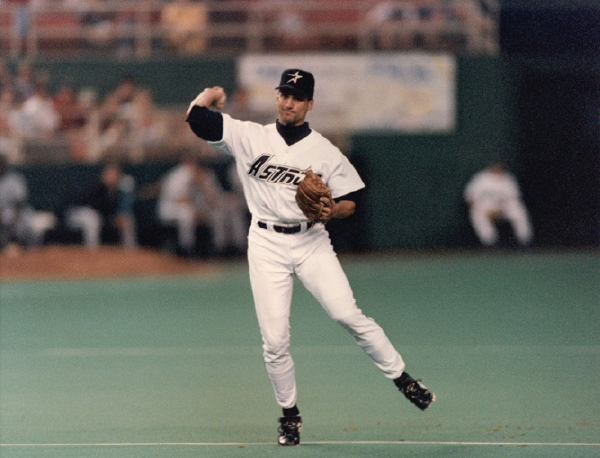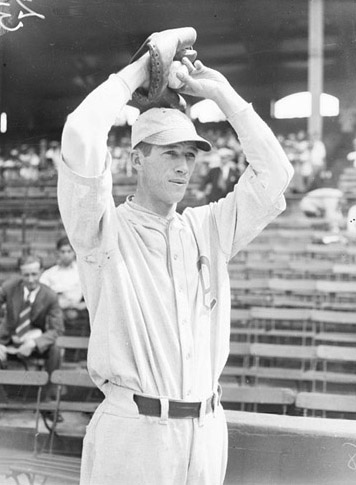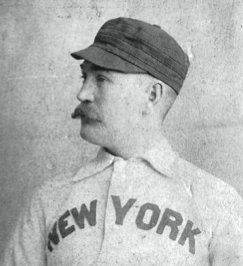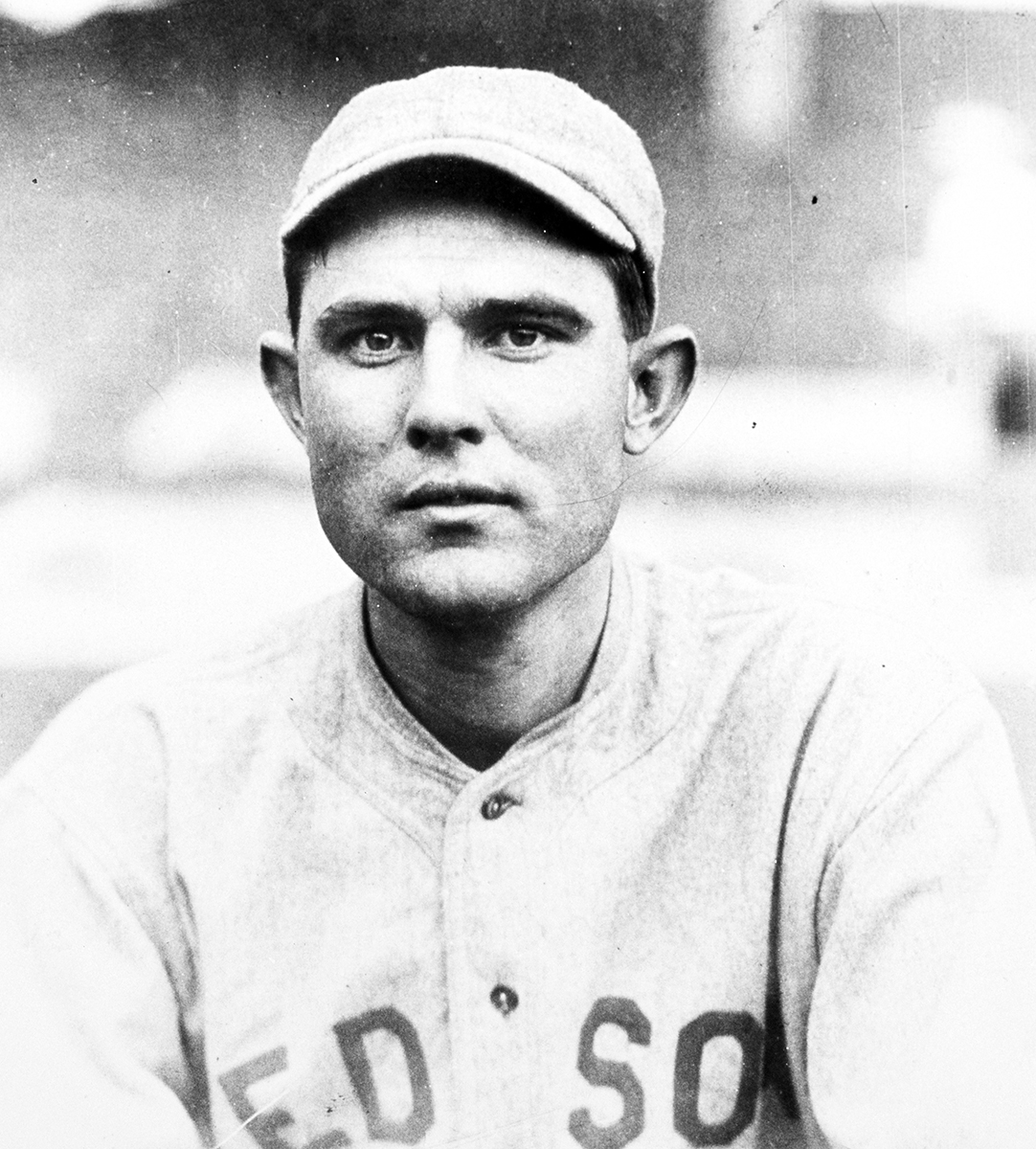October 4, 1942: Cardinals outslug Yankees to take 3-1 advantage in World Series
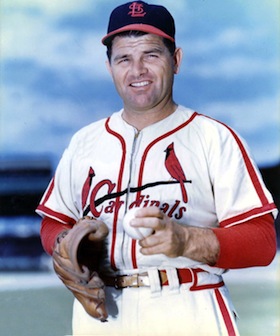 On Sunday, October 4, 1942, a crowd of 69,902 filled Yankee Stadium for Game Four of the World Series, breaking the Series attendance record set only the day before. Having lost two games in a row, the Yankees and their fans were stunned. Their 2-0 loss in Game Three was the first time they had been shut out in a World Series game since 1926, ironically when they played these same Cardinals. On Sunday it was announced that Saturday’s game had earned $136,916.27 for the United Service Organizations,a nonprofit civilian group that provided services and entertainment for servicemen and women (and in the twenty-first century was still active). This was as a grim reminder that overshadowing the World Series, World War II still raged.1
On Sunday, October 4, 1942, a crowd of 69,902 filled Yankee Stadium for Game Four of the World Series, breaking the Series attendance record set only the day before. Having lost two games in a row, the Yankees and their fans were stunned. Their 2-0 loss in Game Three was the first time they had been shut out in a World Series game since 1926, ironically when they played these same Cardinals. On Sunday it was announced that Saturday’s game had earned $136,916.27 for the United Service Organizations,a nonprofit civilian group that provided services and entertainment for servicemen and women (and in the twenty-first century was still active). This was as a grim reminder that overshadowing the World Series, World War II still raged.1
Reporters coming into the Yankees clubhouse after the third game saw a team that was “grim faced and weary.” Manager Joe McCarthy seemed in a daze. Having repeatedly carped through the first three games on what he called poor umpiring, he now focused on a play in Saturday’s loss that seemed to turn the tide for St. Louis. “You can’t beat that,” McCarthy said, referring to a sacrifice bunt by the Cardinals’ Marty Marion in the third inning with Whitey Kurowski on first.2
New York protested the play, claiming the ball hit Marion’s bat twice, effectively fouling it off. The umpires upheld McCarthy’s protest and called Marion back to bat again. He bunted again, topped the ball on the infield, and was safe at first. Instead of one on and one out, there were two on with no outs. On this swing, McCarthy claimed Marion was not in the batter’s box and ought to have been called out–another claim of umpire incompetence. By now McCarthy had developed a less-than-inspiring theme of making excuses for the team’s setbacks. At one point during the game, McCarthy had even protested the Cardinals batboy’s standing in the Yankees’ batter’s circle.3New York Times columnist John Kieran took a dim view of the constant whining, writing, “Maybe the Yankees should show up today with their mouths taped shut.”4 It did not help McCarthy’s frame of mind that his first baseman, Buddy Hassett was lost to the team after breaking his left thumb on Saturday.
The Washington Post depicted a Cardinals team that was “boisterous and jubilant” in the wake of its third-game victory. The Cardinals were loose for several reasons. Trainer Doc Weaver continued to keep things low key with his endless playing of “Pass the Biscuits, Mirandy” as well as his “double whammy,” a hex unleashed on opposing teams. Manager Billy Southworth continued to buoy spirits by all but claiming that the Cardinals would take the Series. He did, however, offer the customary disclaimer: “But mind you. I ain’t going to make any predictions. We’ve still got to win two ball games. The Yankees are tough–there are no tougher and we’ve got to play to win.”5
Southworth called on Mort Cooper to start Game Four. Knocked out of the box in Game One, Cooper ached to redeem his poor performance. “I had six days’ rest and didn’t have my control,” Cooper said of his Game One performance. “I’ve got it now, though. We’ve got the big edge now. They’ve got to win three out of four now. We haven’t lost a series since last July. … It’s damn tough to beat this team three out of four.”6Confidence and swagger were beginning to assert themselves among the Cardinals. McCarthy, meanwhile, named rookie Hank Borowy to start. The 26-year-old had done well in his first season, going 15-4 with a 2.52 ERA, the American League’s fifth best.
The Yankees scored first, on a double by Red Rolfe and a single by Roy Cullenbine in the bottom of the first, indicating that the Yankees were still game. They held their lead until the top of the fourth, when the roof caved in on Borowy.
Stan Musial led off the fourth for the Cardinals. Primarily remembered for his offense, Musial is seldom recalled for speed, much in evidence early in his career. Known as the Donora Greyhound, he was one of the fastest men in the game. Bunting toward the left side of the infield, Musial sprinted toward first and beat out a hit. Later in the inning,Musial came to bat again and doubled, tying a World Series record for most hits in an inning. Sandwiched between Musial’s two hits were two walks and four singles. Two of the hits, by Kurowski and pitcher Cooper, each drove in two runs. Musial’s double sent Enos Slaughter home with the sixth Cardinal tally of the game before the inning ended. In the middle of the onslaught, Borowy was replaced by an equally ineffective Atley Donald.
With the score 6-1 and behind in the Series two games to one, New York found itself on the brink of total disaster. But Southworth’s earlier comment on Yankee toughness was accurate. They, like the Cardinals, played to win.
Going into the bottom of the sixth, Cooper had surrendered only four hits and showed the control he promised–no walks. But then the game got away from him. Phil Rizzuto singled, Rolfe walked, and Cullenbine singled Rizzuto home. Cooper got Joe DiMaggio to pop out to shortstop, and Charlie Keller came to the plate. To this point in the Series, Keller had not done much, batting just .143, although he had hit a two-run homer in the eighth inning of Game Two. This at-bat he hit a three-run homer,making the score 6-5 and knocking Cooper out of the game.
Harry Gumbert, who replaced Cooper, got Joe Gordon to hit a grounder to Kurowski, who made an errant throw, allowing Gordon to reach first. Gordon went to second on a grounder by Bill Dickey. Jerry Priddy, who had replaced the injured Hassett in Game Three, doubled Gordon home to tie the score. Howie Pollet relieved Gumbert and got the third out. But the Yankees had tied the game at 6-6 and were back in business. If they could win Game Four, the series would be tied — the turn of events was that quick for the momentum-driven St. Louis team.
Gumbert’s appearance in the series was an anomaly for the Cardinals. He and catcher-pinch-hitter Ken O’Dea were the only two players on the Cardinals’ postseason roster who had not started their careers with St. Louis. This was a direct reflection on general manager Branch Rickey’s having organized a peerless minor-league system over the years. It was well known that Rickey’s contract would not be renewed at the end of 1942 and that he was actively being sought by other major-league teams, most recently the Dodgers.7
St. Louis immediately regained the momentum as Slaughter and Musial led off the top of the seventh with walks. Slaughter went to third on a wild throw by Dickey, then scored on Walker Cooper’s single as Musial went to second. With Ernie Bonham now pitching for New York, Johnny Hopp sacrificed the runners up a base. Musial scored on Marion’s fly ball off Bonham to make it 8-6.
Max Lanier replaced Pollet on the mound in the bottom of the seventh. Used as a starter and reliever during the season, Lanier had fashioned a 13-8 record. Despite a solid season, he had appeared in the ninth inning of the first game to no advantage, making two errors that allowed two runs to score. Of that appearance, Lanier recalled, “I was nervous, to be honest with you.” But he was on spot in Game Four. “I just happened to have a good curveball that day and good control,” he recalled years later.8
Taking control of the game over the next three innings, Lanier scattered two inconsequential singles and helped his cause by singling in a run for a 9-6 lead. In the bottom of the ninth he got Rolfe on a game-ending grounder to give the Cardinals their third straight win and a three-to-one advantage in the Series. To this point only one team, the 1925 Pittsburgh Pirates, had climbed out of such a hole to win a World Series.
After the game, Babe Ruth went into the Yankee clubhouse to offer words of encouragement. “Keep up your chins. There’s always a tomorrow,” he told his old club. Recalling the Cardinals winning the last two games of the 1926 World Series from the Yankees, he commented, “Well,we can pull this one out the same way.” It was, as it would turn out the next day, not the best of analogies to have offered.9
Sources
In addition to the sources cited in the Notes, the author also accessed Retrosheet.org and Baseball-Reference.com.
Notes
1 “$136,916 Contributed to the USO From Record Third-Game Receipts,” New York Times, October 4, 1942: S8.
2 Charles Dunkley, “Cardinals Are Confident of Polishing Off Yankees,” Washington Post, October 4, 1942: S1.
3 Jack Cavanaugh, Season of ’42: Joe D, Teddy Ballgame, and Baseball’s Fight to Survive a Turbulent First Year of War, (New York: Skyhorse Publishing, 2012), 250.
4 John Kieran, “Sports of the Times: Hot Stuff at The Yankee Stadium,” New York Times, October 4, 1942: S9.
5 “Cardinals Are Confident.”
6 Ibid.
7 “Rickey Conference Permitted Dodgers,” New York Times, October 4, 1942: S9.
8 Peter Golenbock, The Spirit of St. Louis: A History of the St. Louis Cardinals and Browns (New York: Avon Books, Inc., 2000), 244-245
9 “Gossip of Fourth Game,” The Sporting News, October 8, 1942: 16. Subsequent versions have Yankees coach Earle Combs as the person who recalled the 1926 World Series. See Cavanaugh, 252. However, The Sporting News reference to Ruth was contemporary.
Additional Stats
St. Louis Cardinals 9
New York Yankees 6
Game 4, WS
Yankee Stadium
New York, NY
Box Score + PBP:
Corrections? Additions?
If you can help us improve this game story, contact us.


